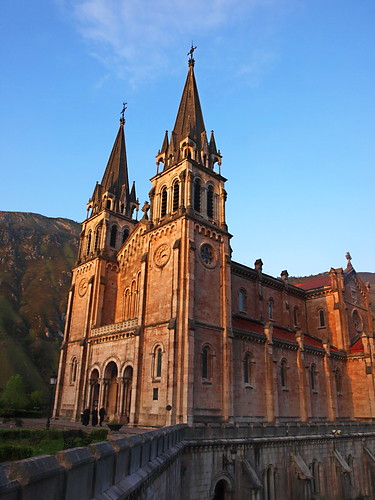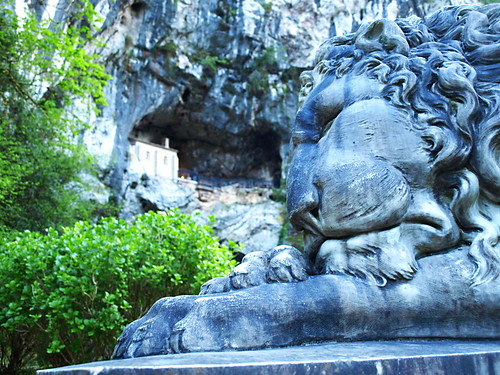Despite feeling dog tired, there was something about the place that instantly snapped me wide awake. At the risk of coming across all new age, the air felt filled with an invisible power; there was something about this hidden valley at the edge of the Picos de Europa that emanated a noble strength which could be felt deep inside the soul.
I had no idea where I was, but from the towering spires of a grandiose church, glowing golden in the sun’s last rays, it was obvious that this was no ordinary hamlet in the forest. This was, I was told in almost reverential tones by our guide, Covadonga.
It was a name I’d never heard before and a location, like the rest of Asturias, that I knew nothing about which was disgraceful considering its history.
Covadonga, the cave of the lady; the place where the Moors who had conquered much of the rest of Spain tasted their first major defeat at the hands of the mercenary soldier Pelayo and his small but determined Asturian army. It was 300 Spartans, Asturias style…but with a more upbeat ending.
It was the turning point in Spain’s and possibly Europe’s history. Covadonga, the place where the reconquest of Iberia began. I knew nothing of any of this but I had instinctively known that it was a site of incredible significance and not because of the Neo-Romanesque Basilica towering above the trees. I’ve been in the presence of opulent religious symbols plenty of times but apart from admiring their architectural cleverness, they don’t touch me emotionally.
Covadonga possesses a quality that has to be experienced first hand to be understood, it feels like a place where myth and reality could easily become blurred. The sleeping lions at the entrance to the sanctuary in the cave lend it an air of Narnia; the fountain below the cave, where it’s said that girls who drink from it will be married within a year, adds further magical elements whereas the humble chapel in the cave and the 19th century Basilica represents the realm of man.
I wish I could have spent more time there. A brief tour of the Basilica and a few moments with Aslan was about all the time I had but it was enough at least to absorb that Covadonga is a uniquely wondrous location.
Buzz Trips Facts: As well as the holy cave sanctuary, fountains and the Basilica at Covadonga there is also a museum (open 10.30am to 2pm & 4pm to 7.30pm), a small park, picnic zone, hotel and café, a huge monumental bell and various suitably spiritual buildings.
Jack is co-owner, writer and photographer for BuzzTrips and the Real Tenerife series of travel websites as well as a contributor to lots of other places. Follow Jack on Google+








Be the first to comment